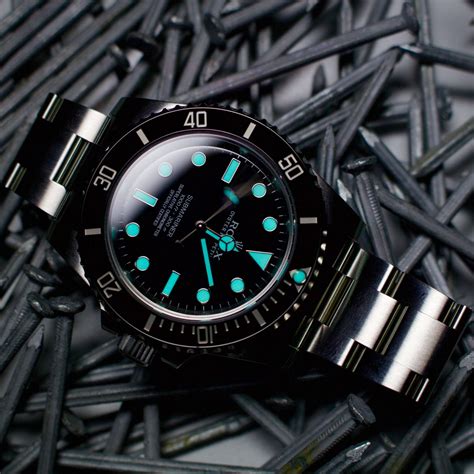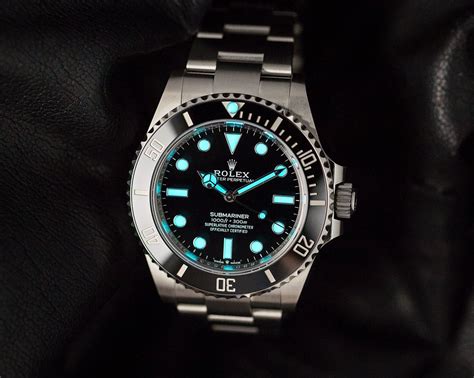rolex luminous dial | rolex glow time rolex luminous dial Due to the radioactive nature of radium, Rolex abandoned the material around 1963 and moved to tritium. Tritium is, like Radium also radioactive, but it has a much lower radiation as well as a shorter half-life. This makes tritium much less dangerous to work with. Tritium has a half-life of approximately 12.5 years. This . See more SelfLoathingIsBased. Level 80 class gear? Where to go to get it. [Question] I’ve completed all of the MSQ as a Black Mage and have just started grinding my relic weapon, yet still haven’t found my class gear. In the previous expansions, it was a set of armor you got from the npc who gave out class quests at max level.
0 · rolex luminous evolution
1 · rolex luminous
2 · rolex glow time
3 · rolex chromalight vs luminous
4 · rolex chromalight luminosa
5 · luminous material for rolex
6 · luminous dials
7 · luminous dial replacement
The weapons in FF15 Comrades can have upgrades in a number for areas including the game's basic stats - Strengthen (STR), Vitality (VIT), Magic (MAG) and Spirit (SPI) - incidentally, this is the order these piece are in switch the my and in this screenshot back (see the bottom right).
Due to the radioactive nature of radium, Rolex abandoned the material around 1963 and moved to tritium. Tritium is, like Radium also radioactive, but it has a much lower radiation as well as a shorter half-life. This makes tritium much less dangerous to work with. Tritium has a half-life of approximately 12.5 years. This . See moreRolex introduced Luminova for its watches in 1998. The company Nemoto & Co. Ltd invented the material in 1993 and patented it in 1955. Luminova, unlike tritium, is not radioactive but rather photoluminescent. This makes it completely safe to work with. Furthermore, . See moreRolex introduced Super Luminova for its watches in around 2000. As the name may suggest, Super Luminova is an improved version of Luminova Superluminova was used by Rolex up until 2008 when Rolex introduced yet another luminous material for its watches – . See more
Chromalight is the first luminous material that Rolex has used that is developed and patented by the company. Chromalight shines in a blue color, which makes it easier to read the time in poor lighting. According to Rolex, Chromalight starts glowing more quickly . See more
A watch glows in darkness thanks to luminous materials (more commonly referred to as “lume” in watch collecting circles), which are typically found on the dial, hands, and .Below is a quick recap and overview of the history of Rolex’s luminous material. 1963: Rolex stopped using Radium due to growing concerns surrounding the material’s health risks and .Rolex luminous materials. Unlike the radioactive luminous material Rolex has used, the non-radioactive materials use a photoluminescent material which means they glow after exposure to light. How bright they shine is primarily dependent on how much light they have been exposed to.
A watch glows in darkness thanks to luminous materials (more commonly referred to as “lume” in watch collecting circles), which are typically found on the dial, hands, and sometimes on the bezel. Glow-in-the-dark objects contain phosphors.Below is a quick recap and overview of the history of Rolex’s luminous material. 1963: Rolex stopped using Radium due to growing concerns surrounding the material’s health risks and switched to Tritium. 1998: Luminova, produced by the Japanese company Nemoto and Co, replaced Tritium. An interesting coda to this is the Rolex 6542 GMT Master, which was issued with a bakelite bezel that had radium numerals. Rolex had to recall the watch and replace the bezel thanks to the excessive radiation the bezel emitted, . A crucial feature for many Rolex enthusiasts is the luminous material on the dial and hands, allowing for nighttime readability. Rolex has employed two primary luminescent materials throughout its history: Super-LumiNova and Chromalight.
Swiss watches marked with “T SWISS T” or “T<25” on the dial denote the use of tritium lume. Some notable examples include the vintage Rolex Explorer II 1655, vintage Rolex Sea-Dweller 16660, and vintage Omega Speedmaster ref. 145.022.
rolex luminous evolution

At the time Rolex started producing Small Crown Submariners and other Sport Models circa 1953, Radium was used for the luminous material on the dial and hands. The material has a distinct orange ochre color and the shape of the markers has a three dimensional appearance. Whether your lume glows blue, green, or somewhere in between, you may be curious about the different types of lumes available on Rolex watches. Here’s our guide to identifying the lume on your Rolex, as well as a few key facts about the history and function of Rolex’s lume materials through the years.
michael kors smartwatch herren test
Rolex Oyster Perpetual 39 and Rolex Milgauss Black Dial Not sure what kind of lume your Rolex has? For vintage Rolex watches, check the date of production, or look for the tritium marker at 6 o’clock.White dial With chronograph counters. This model features a white dial with spray-coated counters, 18 kt gold applique hour markers and hands with a Chromalight display, a highly-legible luminescent material. The dial allows drivers to accurately map .Rolex luminous materials. Unlike the radioactive luminous material Rolex has used, the non-radioactive materials use a photoluminescent material which means they glow after exposure to light. How bright they shine is primarily dependent on how much light they have been exposed to.
A watch glows in darkness thanks to luminous materials (more commonly referred to as “lume” in watch collecting circles), which are typically found on the dial, hands, and sometimes on the bezel. Glow-in-the-dark objects contain phosphors.Below is a quick recap and overview of the history of Rolex’s luminous material. 1963: Rolex stopped using Radium due to growing concerns surrounding the material’s health risks and switched to Tritium. 1998: Luminova, produced by the Japanese company Nemoto and Co, replaced Tritium. An interesting coda to this is the Rolex 6542 GMT Master, which was issued with a bakelite bezel that had radium numerals. Rolex had to recall the watch and replace the bezel thanks to the excessive radiation the bezel emitted, .
rolex luminous
A crucial feature for many Rolex enthusiasts is the luminous material on the dial and hands, allowing for nighttime readability. Rolex has employed two primary luminescent materials throughout its history: Super-LumiNova and Chromalight.Swiss watches marked with “T SWISS T” or “T<25” on the dial denote the use of tritium lume. Some notable examples include the vintage Rolex Explorer II 1655, vintage Rolex Sea-Dweller 16660, and vintage Omega Speedmaster ref. 145.022.
At the time Rolex started producing Small Crown Submariners and other Sport Models circa 1953, Radium was used for the luminous material on the dial and hands. The material has a distinct orange ochre color and the shape of the markers has a three dimensional appearance. Whether your lume glows blue, green, or somewhere in between, you may be curious about the different types of lumes available on Rolex watches. Here’s our guide to identifying the lume on your Rolex, as well as a few key facts about the history and function of Rolex’s lume materials through the years.
Rolex Oyster Perpetual 39 and Rolex Milgauss Black Dial Not sure what kind of lume your Rolex has? For vintage Rolex watches, check the date of production, or look for the tritium marker at 6 o’clock.

rolex glow time


michael kors smartwatch mkt5045
michael kors summer mid sandals
Maximize DEF * HP: Maximize the product of HP by DEF (physical eHP) Maximize SPR * HP: Maximize the product of HP by SPR (magical eHP) Maximize MP * MP_REFRESH: Maximize the number of MP regained each turn: Maximize M_DAMAGE With HP > 6000: Maximize Magical Damage while keeping HP > 6000: Maximize P_DAMAGE With .
rolex luminous dial|rolex glow time



























